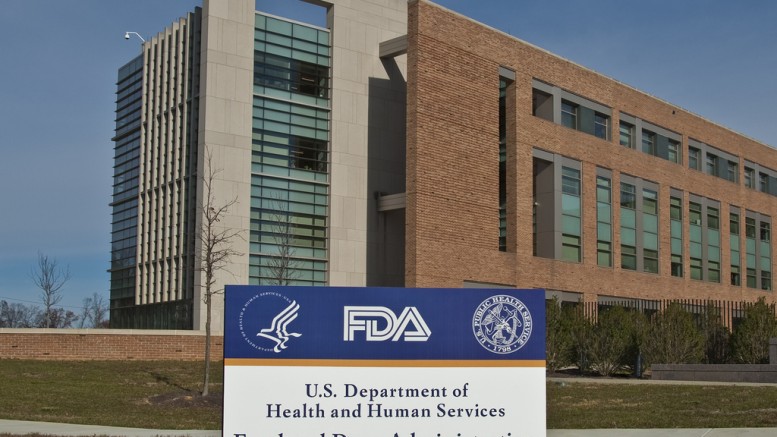The US Food and Drug Administration (FDA) is the regulatory body that monitors and enforces safety guidelines spelled out in the Federal Food, Drug, and Cosmetic Act. In this article, we will look at the different methods used by the FDA to ensure our food is safe, and review ways to avoid food safety violations.
How The FDA Enforces Violations
The FDA has multiple levels of enforcement. The type of enforcement used is directly related to the nature of the violation. Enforcement actions the FDA uses are shown below.
Warning Letter
When the FDA has confirmed a food safety violation, it will often send a warning letter to the individuals or businesses involved. Warning letters outline the details of the violation, and the steps required to correct the situation. A written response detailing the corrective action taken is required.
Seizure
If the FDA violation involves a product that has been either misbranded or altered in any way, the Administration will request that the product be removed and made unavailable for purchase. Follow-up is required to verify that this action has taken place.
Injunction
The FDA may seek a court order requiring individuals or businesses to perform an act or refrain from performing an action that causes a violation of the Act. Additional follow-up monitoring is then required to ensure the injunction requirements are met and remain in effect.
Criminal Prosecution
This method of enforcement may be recommended by the FDA for serious violations. The exact action taken depends entirely on the severity of the food safety violation in question. A misdemeanor conviction can end with a fine or jail sentence of up to a year. Felony convictions result from a second violation and can result in fines or imprisonment of up to three years.

The Fine Schedule
The Criminal Fine Enforcement Act of 1994 details the fine amounts attached to various misdemeanors as follows:
- A misdemeanor by an individual that does not result in death may result in a fine of up to $100,000
- A misdemeanor by a corporation that does not result in death may result in a fine of up to $200,000
- A misdemeanor by an individual that results in death or a felony may result in a fine of up to $250,000
- A misdemeanor by a corporation that results in death or a felony may result in a fine of up to $500,000
As you can see, the FDA takes food safety seriously when you consider how steep some of the fines can be within these limits.
How The FDA Tracks Compliance
The responsibility for conducting inspections and investigation violations falls to the FDA field offices. Inspectors collect samples that may result in enforcement or regulatory action. The type of action to correct a violation will depend on the type of breach and the level of public health concern. An outbreak, for example, will require stricter enforcement than an in-house contamination complaint. Other factors that may affect enforcement methods can include FDA policy, and if the parties concerned have a history of previous violations.
How Restaurants Can Avoid Receiving a Violation Warning
It is possible to avoid several types of food violations. They all should form part of a comprehensive Hazard Analysis and Critical Control Point HACCP Plan. Here are the most common food violations that will result in an FDA warning and how to avoid them.
Keep Up With Proper Sanitation
One of the main issues with food safety compliance comes from poor sanitation practices. Three types of violations can result from not keeping things clean. They include the following:
- failure to keep buildings and facilities sanitary
- failure to properly clean utensils and equipment
- inadequate hand-washing facilities, supplies, or hot water

Keep Pests Out
The presence of many pests can result in food safety violations. The most common are mice and other rodents. The main violations to avoid with proper pest control include:
- ineffective pest exclusion
- poor equipment storage and waste removal systems
- pesticide use leading to contamination
Effective Monitoring
With the correct monitoring procedures, food safety issues can be handled promptly. Violations that result from monitoring issues include:
- Sanitation practices not being sufficiently monitored
- Incomplete records of monitoring practices
- Monitoring frequencies are unable to verify compliance
Improve Record-keeping
An on-site inspection involves taking a look at the records collected and stored. Violations often result from incomplete records of many of the following matters:
- test results and batch records
- processes related to labels and packaging
- sanitation control information that also outlines corrective activities
- procedures outlining complaint management, lab operations, and quality control
- how significant product guidelines are being met and maintained
Storage Issues
In the food industry, storage issues result in a high volume of FDA violations. Here are some ways to avoid a warning:
- ensure that all sanitized equipment and personal property is securely and correctly stored
- storing toxic cleaning agents separately from everything else on site
- storing finished food away from potential contaminants
Final Thoughts
Food safety should concern everyone. This includes food from the origin of the ingredients to the processing plants to the retailers, and finally, the consumers who have purchased the finished food for consumption. Every step of the way, food must be safe to ensure that disease is not present and that illness does not result from a foodborne pathogen. When you consider how often some food items are handled before they are served to a person, it becomes clear how massive a feat food safety can be.
However, with the correct HCAAP plan in place, and the means to monitor that the standards set are being met, keeping food safe for all is achievable if all parts of the supply chain follow the same safety procedures. With the FDA providing enforcement, violations can be corrected quickly thereby preventing any issues from getting out-of-hand. Knowing the FDA is on the side of the consumer should put all our minds at ease about the safety of the food we eat.
